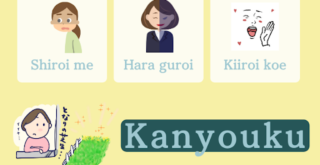What should you do first when you decide that you want to learn Japanese? What should you start with when you decide that you want to learn Japanese? Many people are familiar with the Japanese Language Proficiency Test (JLPT), but there are many different ways to study Japanese, including Japanese language learning apps, online lessons, Japanese language schools, video materials, and face-to-face interactions. In this article, we will introduce learning approaches and resources for a wide range of Japanese language learners, from beginners to advanced. Read to the end and you are sure to find the study method that is right for you! There are many advantages to being fluent in Japanese. You will be able to interact with local people when traveling, deepen your understanding of Japanese culture and history, and more. You can also improve your business communication skills and advance your career. Furthermore, you will be able to teach Japanese overseas and work as a translator, so you can take on new jobs that were not an option before. Learn Japanese and discover your new possibilities!
Contents
Basic Information on Japanese Language Overview, Writing Systems, Pronunciation

First, here is a summary of basic information about the Japanese language. The Japanese language is mainly used in Japan and in countries that were formerly Japanese territories. It is also used, of course, by Japanese who have emigrated outside of Japan. In Japan, although Japanese is not designated as an official language, all official documents are written in Japanese. In school education, Japanese is taught as a subject called “Kokugo” (Japanese as a Foreign Language), so it has become the de facto official language of Japan. Although precise demographic statistics on Japanese speakers are not available, it is estimated that there are more than 130 million Japanese speakers. This is surprising because it is one of the top 10 native language speakers in the world. In the following, we will first look at the characters and pronunciation of Japanese, and then at the Japanese Language Proficiency Test.
Characters and Pronunciation
The Japanese language is written using three types of characters: hiragana, katakana, and kanji. Kanji characters were imported from the Chinese language, and hiragana is a corruption of the kanji, while katakana is a partial derivation of the kanji. Combining these characters allows for complex and flexible expression. In terms of pronunciation, the language is characterized by being a mora language rather than a syllabic language.
(1) Consonants + vowels (“か” → ka, “も” → mo, etc.),
(2) semiconsonants + vowels (“や” → ya, “を” → wo, etc.)
(3) special moras (plosives “ん”, plosives “っ”, and long vowels “ー”).
In particular, special moras are unfamiliar to non- Japanese native speakers and may be difficult to learn. Regarding basic grammar, the word order is characterized by the SOV type. The order is subject, modifier, predicate, with the modifier placed before the moderated. If you are a native speaker of English or any other SVO-type language, you need to get used to the word order first. Lastly, Japanese has a treatment expression called keigo, which is used to show respect. It is a special vocabulary and grammar used to show respect to others and is especially important in the business world.
JLPT (Japanese Language Proficiency Test)
When studying Japanese, the JLPT is often considered the target. As stated in the Japanese Language Proficiency Test (JLPT), “In principle, the JLPT is intended to measure and certify the Japanese language proficiency of non-native speakers of Japanese.” As stated, the JLPT is used to certify the level of Japanese language proficiency of non-native speakers of Japanese. There are five levels from N1 to N5, with N5 being the easiest and N1 being the most difficult. N4 and N5 are for basic Japanese studied at Japanese language schools, etc., while N1 and N2 are for a wide range of real-life situations. For a detailed explanation of each level, please check the official website.
【Japanese Language Proficiency Test】
https://www.jlpt.jp/e/index.html
Effective learning methods

After reading this far, you may be thinking that Japanese seems difficult…. From here, we will tell you how you should actually study Japanese. As an example, let’s consider five patterns: using Japanese language apps or Japanese textbooks, participating in a language exchange or online lessons, attending a Japanese language school, learning through video materials, and interacting with a Japanese-speaking friend or partner. Please learn about the advantages and disadvantages of each and consider the most effective learning method for you.
Online Resources, Apps, Learning Japanese, Textbooks, Reference Books
If you want to learn Japanese on your own, the first thing that comes to mind is probably online services and books. You can use smartphone apps such as the famous “Duolingo”, internet sites such as “NIHONGO eな”, and Japanese textbooks to advance your self-study. The advantage of using these is that you can start easily and inexpensively. We recommend them for those who want to experience Japanese first and see how it goes before making a big investment in a Japanese language school or other institution. The good thing is that you can proceed at your own pace, but on the other hand, the disadvantage is that it is difficult to maintain motivation. If you are self-taught, you will have no one to ask questions to when you have problems. It might be a good idea to start with self-study and move on to other methods when you feel you want someone to ask questions to.
【Reference sites】
・Duolingo
・NIHONGO eな
・NHK WORLD-JAPAN やさしい日本語
https://www.nhk.or.jp/lesson/en/
Language Exchange and Online Lesson Methods
When studying with applications or textbooks, many of you may want to ask someone a question or talk with someone. If you want to talk with Japanese speakers without having to come to Japan, language exchange services and online lessons are recommended. These are available for free or for a fee, so you can choose one that fits your budget. In the case of language exchange, you may be able to support the other party’s language learning as well, so you may be able to speak with them on a more equal footing and without hesitation. Online lessons also come in a variety of forms, including one-on-one and group lessons. It depends on whether you want to focus on the amount of conversation or whether you want a group of people to learn with. The advantage of these methods is that you talk to other people, which motivates you to learn. On the other hand, the disadvantages are that you cannot choose your own time and it can be a financial burden.
Japanese Language Schools
If you want to learn Japanese more seriously, you should consider Japanese language schools. You can actually study in Japan or attend Japanese language schools in other countries. The advantage of Japanese language schools is that you can acquire a high level of Japanese language skills that will enable you to enter a Japanese university or do business in Japan. Since students who are serious about learning Japanese gather at these schools, you will be able to connect with highly motivated peers. The disadvantages to this are the large financial burden and the time commitment of several months or years. Also, if you study in Japan, the good thing is that you can enjoy Japanese culture in your daily life. On the other hand, there is the stress of living in a foreign country, no matter how much you wanted to live there. It might be a good idea to think about the level you want to achieve, your budget, and the time available to make a decision.
Video materials
Video materials have become popular in recent years. In particular, many people may have become interested in Japan and the Japanese language through anime. Japanese movies and dramas are also popular all over the world. Studying Japanese through anime, movies, and dramas is fun as a hobby, so it is not hard to continue. If your motivation is to better understand the stories in anime and movies, it may be easier to get into the mindset of studying vocabulary and grammar, which tend to be boring. One advantage is that you can enjoy the learning process. The disadvantage is that it is difficult to learn systematically. For those people, we recommend studying on YouTube, where you can find many videos that explain Japanese vocabulary, grammar, commonly used phrases, slang, etc. in an easy-to-understand manner. If you enjoy watching videos, this is a great method to try.
Interact with Japanese friends and partners
As you progress in your studies, you will want to interact with Japanese-speaking friends and partners. You may wonder “How?”, but you can find friends at language exchange events or on social networking sites. While it may be difficult for some people to make a sudden approach on social networking sites, language exchange events are a good place to start talking one-on-one, making it easier to become friends.
If you are new to language exchange events, Ohanasi Kagawa is a good place to start: Ohanasi Kagawa hosts free online exchange events for Japanese and English learners on weekends. One of the features of this event is that it is one-on-one between Japanese and English learners, and they switch the language they speak every 15 minutes. This creates an environment where we can teach and learn from each other. We have made various efforts to ensure that you can participate safely, so please take a look at our website!
That said, you might still not be confident in your Japanese speaking ability. You’re not sure how to study Japanese. For people like that, we are currently offering free Japanese language consultation and free lessons for a limited number of 10 people each month.
You don’t know how to study Japanese. If you are interested in taking Japanese lessons to solve what you don’t understand, please feel free to join us.
If you are interested, please click the URL or image below.
Click here to see more details >>>







